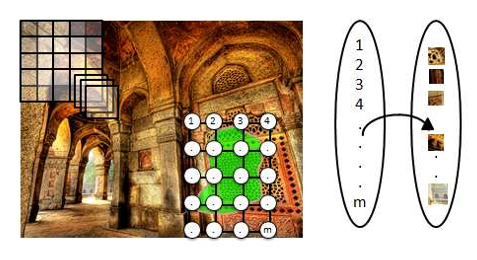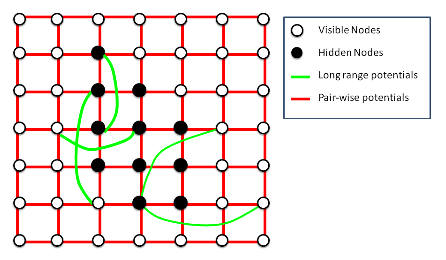




Did you find this useful? Give us your feedback

![Figure 8: Successful reconstruction of ruined walls of Golkonda fort. (a) The original image with selected mask. (b) Output of exemplar based [4] inpainting mask. (c) Output of proposed approach.](/figures/figure-8-successful-reconstruction-of-ruined-walls-of-2vtst9rl.png)
![Figure 7: Successful object removal. (a) The original image with selected mask. (b) Output of exemplar based inpainting mask. (c) Output of proposed approach. We see that the exemplar based approach [4] being local is not able to synthesize the missing region effectively whereas ours generates results with better coherency by performing a global optimization.](/figures/figure-7-successful-object-removal-a-the-original-image-with-1edr7n75.png)













10 citations
5 citations
...[31] incorporated long range pairwise potentials into energy equation in order to capture the inherent repeating patterns for inpainting heritage architectural images....
[...]
15,671 citations
7,413 citations
...Reader is encouraged to see [2] for details of the move making algorithms....
[...]
...The proof of sub-modularity and semi-metricity of the energy functions also guarantees that popular move making algorithm α-β swap can be efficiently used to find the global minima of this energy with a constant approximation [2]....
[...]
...This proof guarantees that the energy function can be efficiently minimized via move making algorithm like α-β swap [2]....
[...]
[...]
3,830 citations
...In [1] region-filling is done by propagating image Laplacians in the direction of the isophotes....
[...]
3,066 citations
...Experimental results on a wide collection of images show that we clearly outperform popular technique like exemplar based inpainting [4]....
[...]
...Image completion is a highly researched area in computer vision [4, 5, 7, 8, 10, 11]....
[...]
...[4] propose a priority-based mechanism which combines texture synthesis and isophote driven inpainting for image completion....
[...]
...We compare our method with the well known exemplar based method [4]....
[...]
...On the other hand, greedy algorithm like [4] clearly fails in removing these objects....
[...]
1,978 citations
...These models (wavelet coefficients [13], colour histogram [6]) are used for representation of image characteristics....
[...]
Apart from object removal and ruined wall reconstruction the authors also use their method for an interesting application known as background replacement.
For all the examples, the belief thresholds for pruning and confidence is set to −2ssd0 and −ssd0 respectively, where −ssd0 represents a predefined mediocre ssd between the patches.
Identity of indiscernibles: ssd between two vector is equal to zero iff both the vectors are equal, i.e.,ssd(Li, Lj) = 0 ⇐⇒ i = j, ∀i, j.3.
The proof of sub-modularity and semi-metricity of the energy functions also guarantees that popular move making algorithm α-β swap can be efficiently used to find the global minima of this energy with a constant approximation [2].
To enforce coherency in the completed image, the authors define a smoothness term such that overlapping region of neighboring labels have least sum of squared distance.
The authors solve the energy minimization problem on a corresponding graph, where each random variable is represented as a node in the graph.
Since the image may contain many repetitive patterns which are prominent, thus the authors generate the top C offsets to capture varied repetitions (C = 10 was used in their experiments).
The authors define the image completion problem in a labeling problem framework where overlapping spatial positions in image can be considered as a set of sites and patches of size w × h sampled from source region can be considered as labels.
Ei(xi = Li) = l∑m=0km(xim − Lim) 2. (2)In other words, data term measures the agreement between random variable xi and label Li in terms of sum of squared distance (ssd) of known pixels.
In the process of repetition offset computation, the authors use Approximate Nearest Neighbour1 technique in order to find the most similar patches.
The dataset for their experiments comprises of a large variety of images of Indian Heritage sites including Hampi, Konark, Golkonda Fort etc.
The labeling problem here is to find the optimal function f∗ : S → L. Optimality criteria is defined based on quality of the image completion.